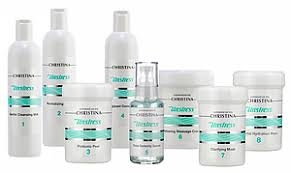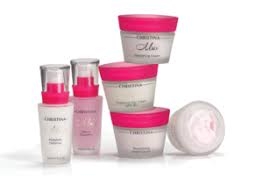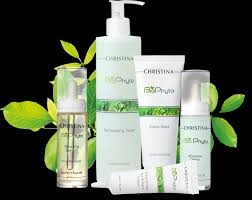Microorganisms living in completely uninhabitable of their "normal" fellow conditions, cause admiration and seem like real superheroes. They are able to produce unique molecules that can protect them from very high or very low temperatures, the scorching sun or even ionizing radiation, pressure, unthinkable salt concentrations and many other aggressive factors. These organisms can be inhabitants of the deep sea or thermal springs, multiply in the thickness of glaciers or directly in a nuclear reactor. The environment, extreme and destructive for some living organisms, turns out to be quite suitable for the life of their stress-resistant opponents — it is these viable bacteria that are called extremophiles, and their irresistible thirst for life and unique synthetic activity attracted the attention of the creators of cosmetics and not only. More about them – at estet-portal.com.
Enzymatic activity of extremophiles – important property for medical and cosmetic ingredients
The International Society for Extremophiles has been studying their potential benefits for humanity and the possibility of their use for industrial purposes for 15 years:
• for the disposal of poorly degradable waste,
• in creating detergents that can work in difficult conditions,
• in high-temperature processing of, for example, starch and cellulose, which takes place in an acidic environment.
The enzymes of these organisms, such as alkaline proteases of superalkaline lovers (pH greater than 10), are used as proteolytic breakers of stubborn dirt. These enzymes have proven to be resistant to high temperatures, the presence of heavy metal salts, and pH fluctuations, making them indispensable cleaners in difficult environments, such as abandoned waste dumps.
The study of some extremophiles by physicians led to discoveries no less significant for mankind. While studying the surface inhabitants of the genus Penicillium at Barkley Pit in Montana, they discovered new enzymes and metabolites — berkeleldione and berkeleutrione, which have shown activity against metalloproteinase-3 and caspase-1. Their potential activity is being studied in some oncological diseases and Huttington's disease, and is also of great interest to manufacturers of cosmetics brand Christina, represented on our market by by TOP Cosmetics.
Thermophilic bacterium – source of important cosmetic ingredients for sensitive skin
One of the first microorganisms that attracted the attention of restless sensation seekers — technologists of cosmetic production, there was a thermophilic bacterium from deep-sea thermal springs. She lives in truly hellish conditions — at a temperature above 80 degrees C and under a pressure of 200 bar Thermus thermophilus. To survive in such conditions, these organisms have developed special defense mechanisms — a unique thermally induced (activated by temperature) enzyme complex that is UV stable and neutralizes reactive oxygen species.
In addition, these bacteria also contain enzymes with superoxide dismutase, catalase and glutathione peroxidase activity. In experiment it was shown that this enzyme complex causes:
• inactivation of superoxide radicals (SOD-like effect),
• hydrogen peroxide detoxification (catalase-like effect).
These enzymes are very resistant to heat and ultraviolet exposure, that is, as part of a cosmetic product they can:
• protect human skin from lipid peroxidation in cell membranes;
• enhance wound healing ability;
• repair UV-induced DNA damage (guanidine oxidation) in epidermal cells.
Thus, the enzymes of this microorganism provided the skin with protection against oxidation caused by high temperatures and aggressive ultraviolet radiation.
Cosmetic product enriched with enzymes of thermophilic bacteria, indicated for use on skin damaged by ultraviolet radiation.

It can be used as a bioreparant for aging skin and is also indicated for application to the skin before sun exposure in hot weather.
Biotechnologists from the Christina Laboratories took advantage of these properties to create a unique Unstress cosmetic line, addressed to people with sensitive, atopic, damaged skin prone to redness and irritation.
Cosmetic ingredient of bacterial origin with protective properties
Continuing the study of Thermus thermophilus enzymes in cosmetics, scientists found that an increase in the intensity of exposure to stress factors — heat and sun exposure — compensated by a proportional increase in the activity of the cosmetic product, its positive effect on the processes of differentiation, the synthesis of involucrin and the production of ceramides. This was used by the Christina Lab to create a cosmetic line with the Musa epigenetic concept.
The main idea of Musa is to strengthen the protective properties of the skin and increase its resistance to stress by increasing the immune and antioxidant potential.

Clinical studies on volunteers have shown that the application of Musa cream containing this enzymatic complex protects cell membranes from UV-A-induced lipid peroxidation and activates the processes of differentiation of barrier structures.
Using the Musa cosmetic line reduces transdermal water loss and improves the skin's moisture-retaining properties.
Ice Mushroom – source of cosmetic ingredients with detoxifying properties
Another interesting extremophile, attracted by cosmetology technologists — ice mushroom Tremella Fuciformic or Fucus tremella. Despite its name, this mushroom is not an arctic inhabitant — its extremophilicity is determined by its extreme unpretentiousness and adaptability. He lives in very different conditions — from the subtropics of South America to the extreme climate of Primorsky Krai, remote areas of China and Japan. This mushroom is actively used in cooking, where it conquered gourmets with its crispy wavy lacy processes.

Tremella contains a huge amount of vitamin D. Its concentration in the mushroom is much higher than in cod liver, salmon, tuna and other products. Tremella contains many amino acids, minerals, proteins and carbohydrates – and all this provides tremendous nutritional value. In oriental medicine, the mushroom is used as an antiaggregant — reduces blood clotting and improves blood circulation, especially capillary. No less unique is the effect of Tremella on the skin, which was used by the Christina laboratory in the BioPhyto line. ; establishing a balance between ana- and catabolism,
• regulation of sebum production and especially prevention of its excessive synthesis,
• strengthening capillaries,• improvement of blood circulation, which determines the improvement in the condition of couperose skin.
Due to the unique composition of polysaccharides in Tremella, they not only increase the moisture-retaining properties of products, but also reduce their reactivity, which is a real salvation for sensitive and couperose skin.
Christina laboratory biotechnologists have successfully used the properties of extremophilic bacteria to create unique cosmetic lines. Christina cosmetics, presented by
by TOP Cosmetics,







Add a comment